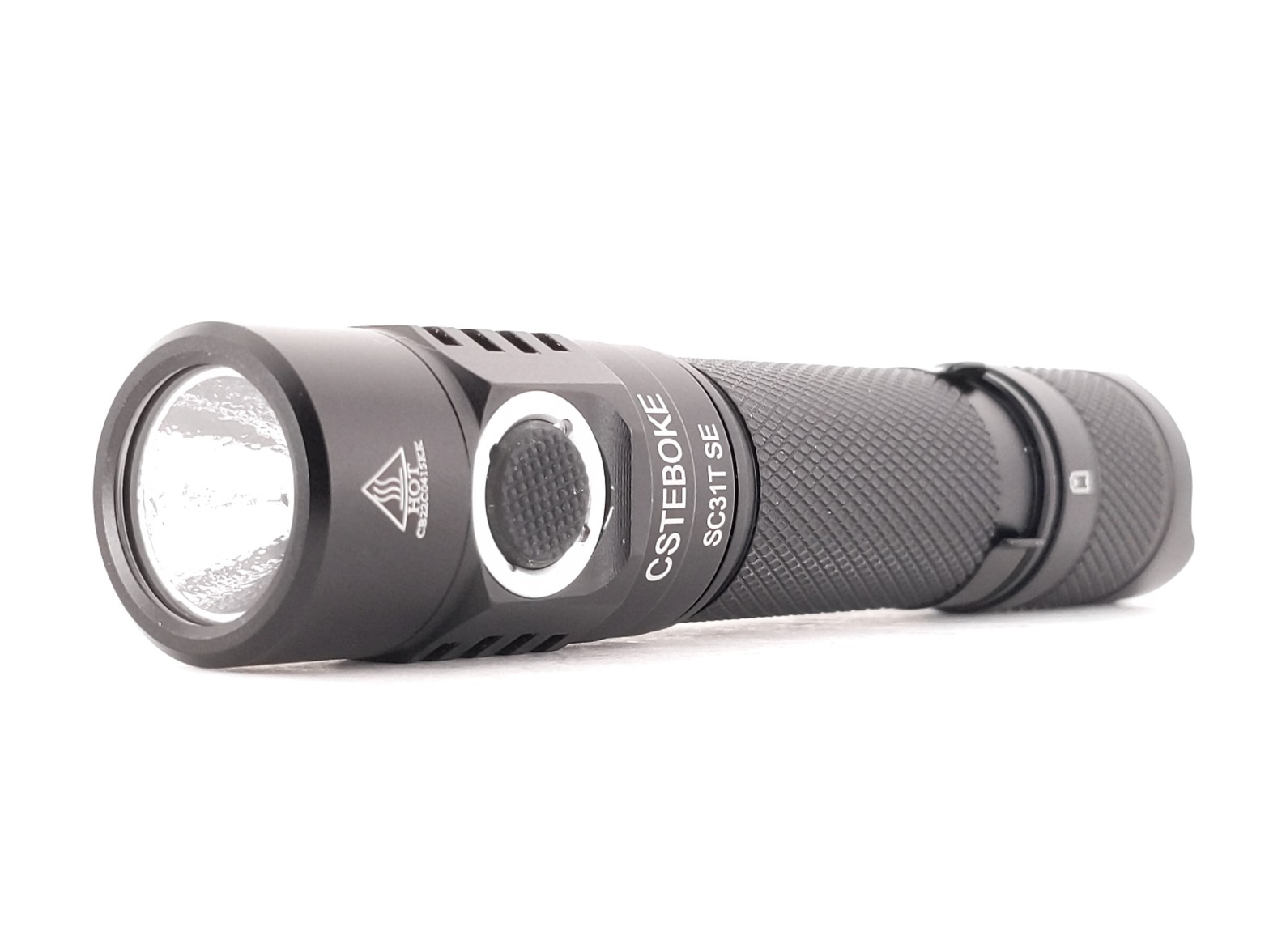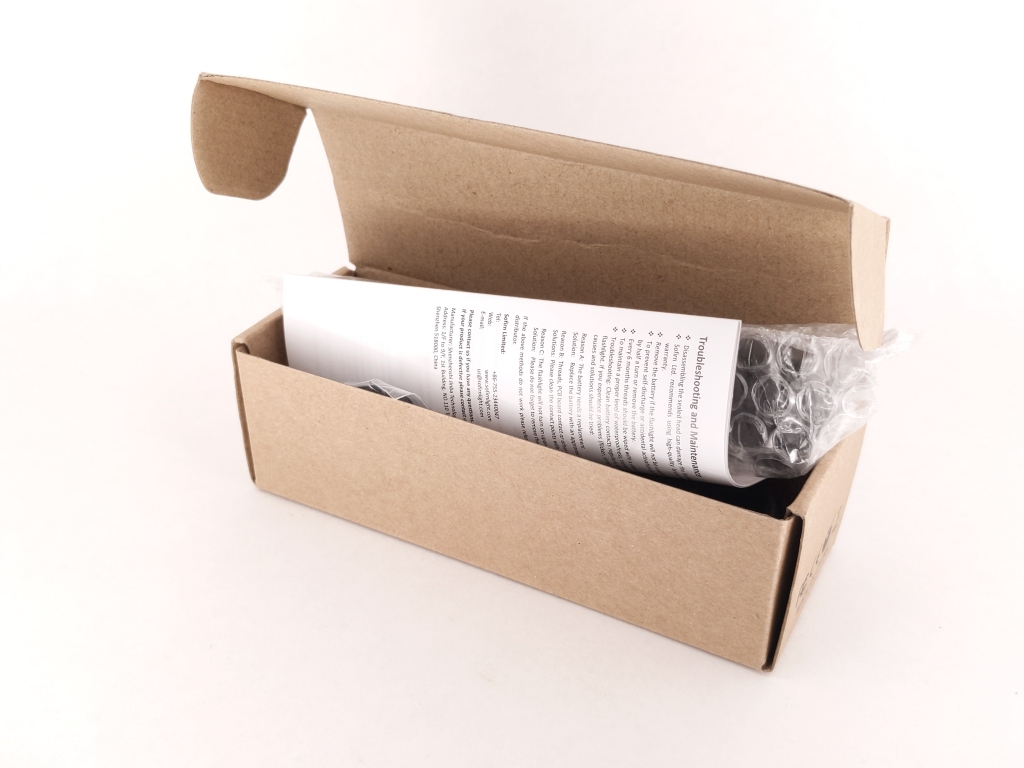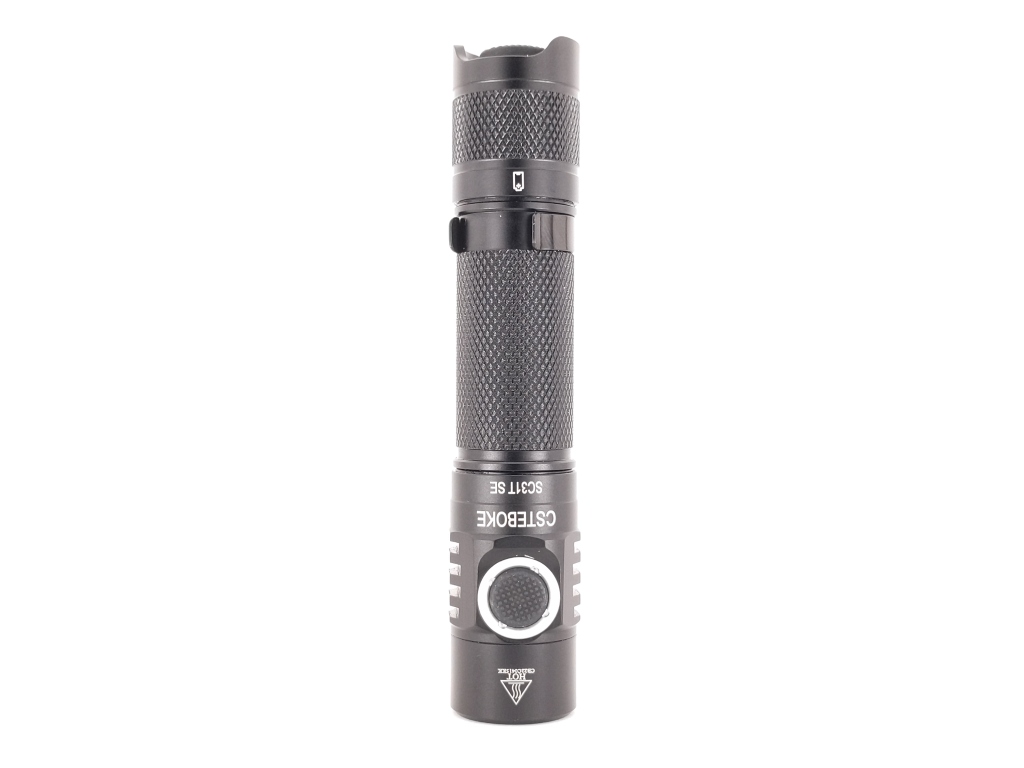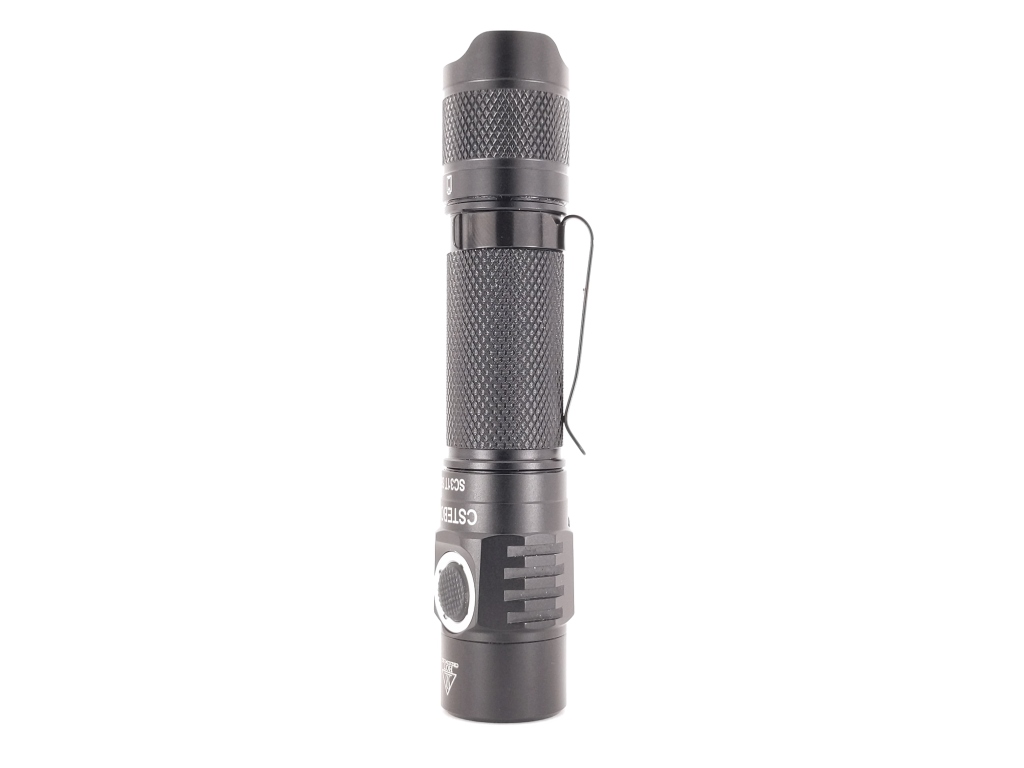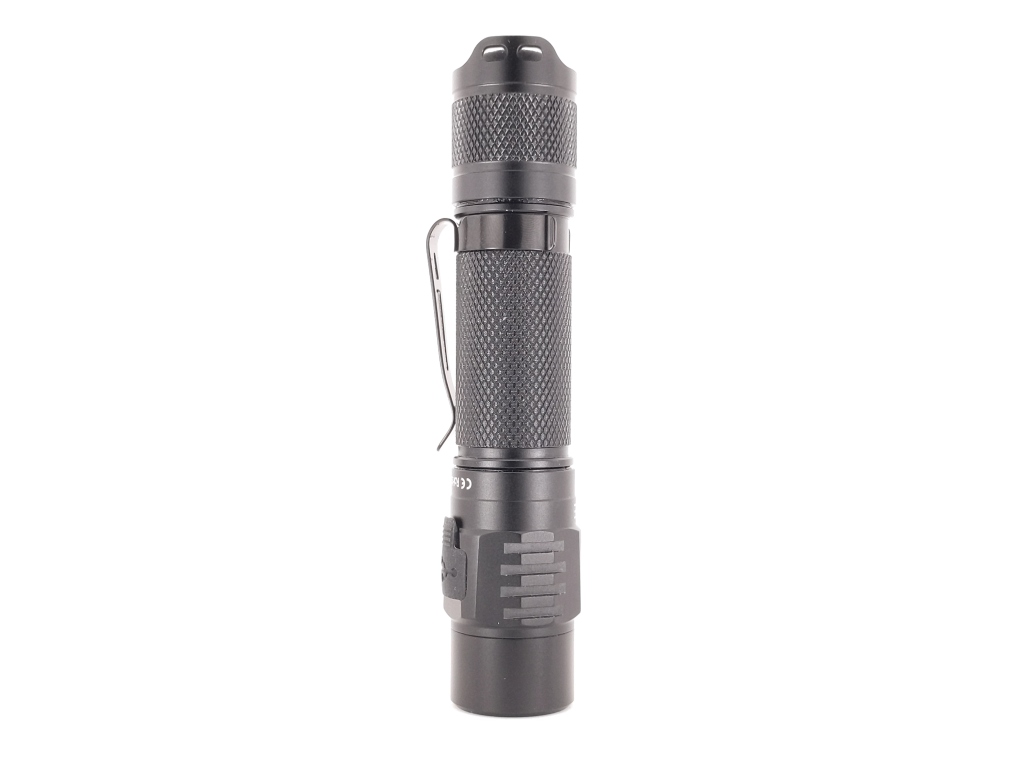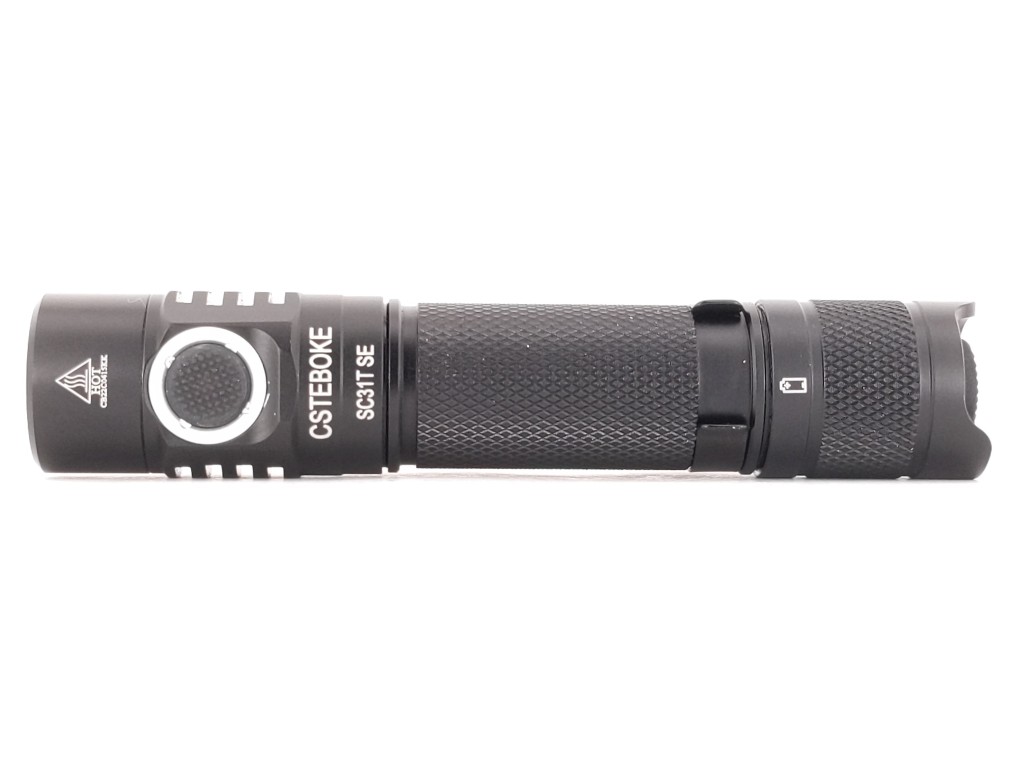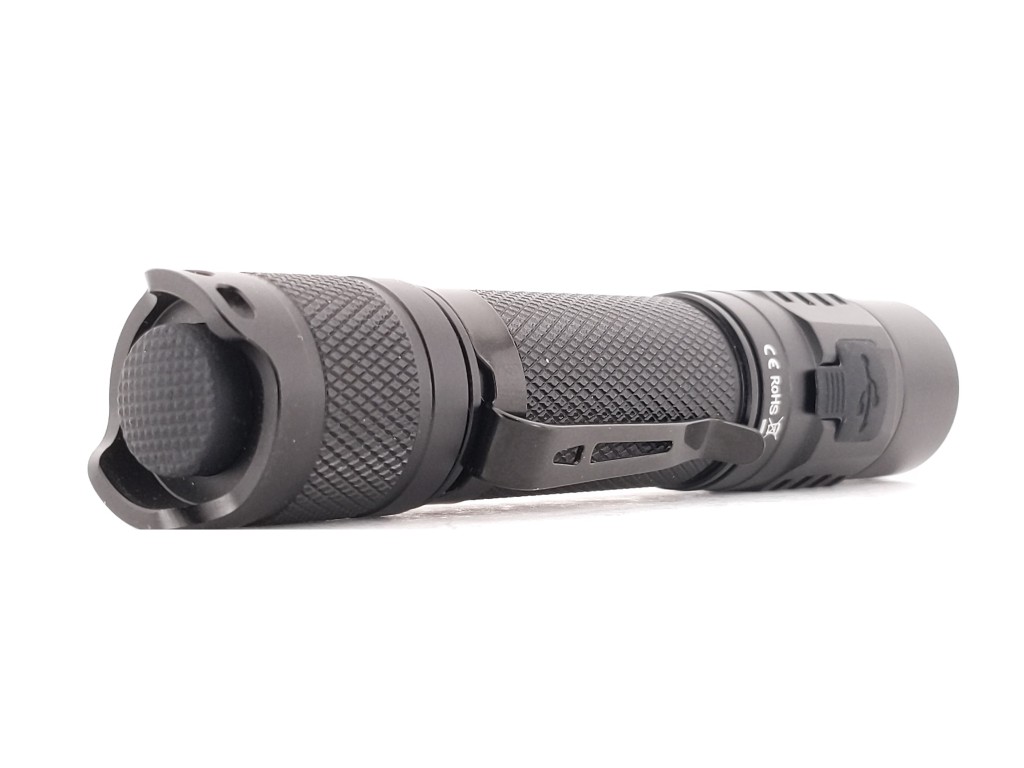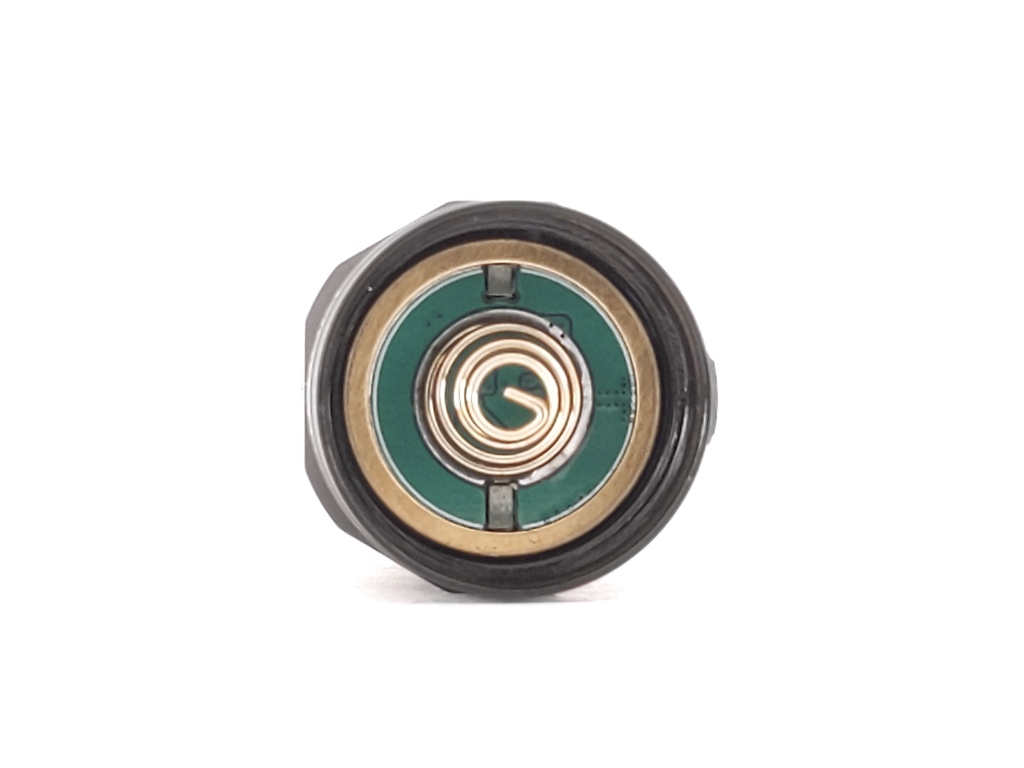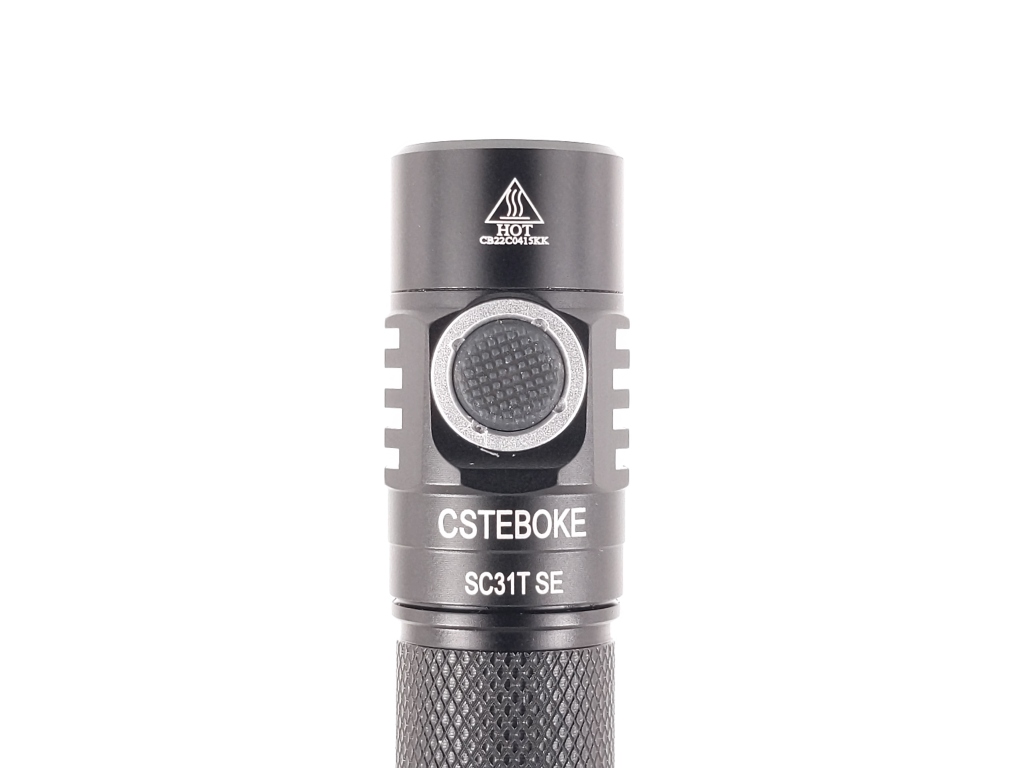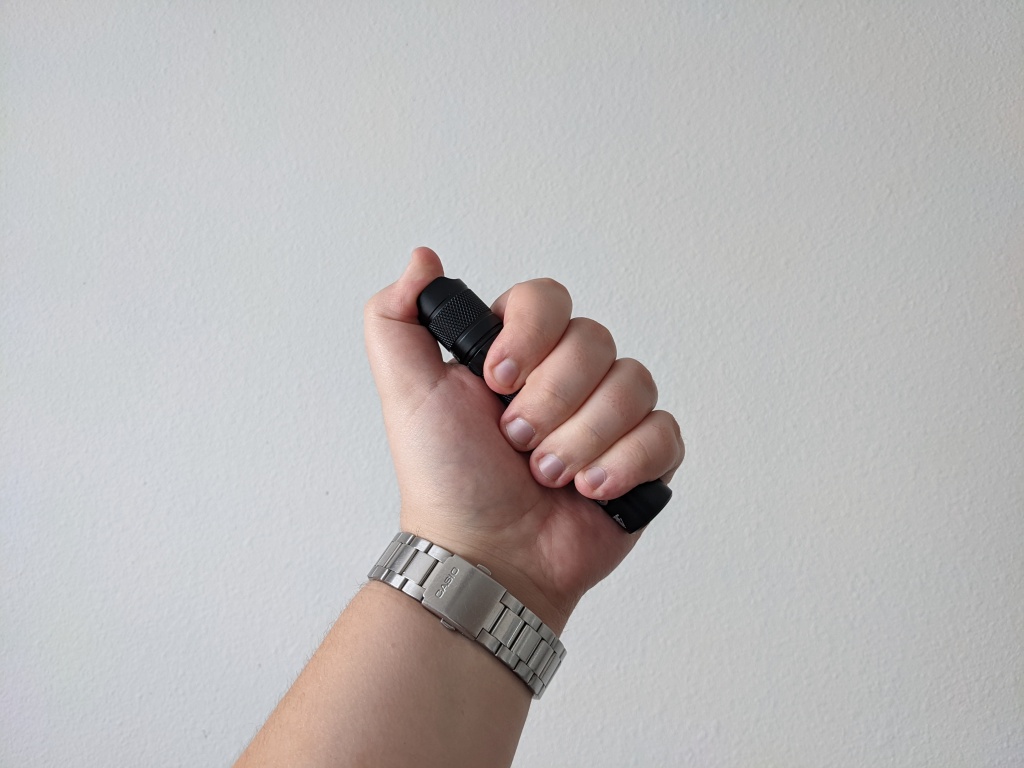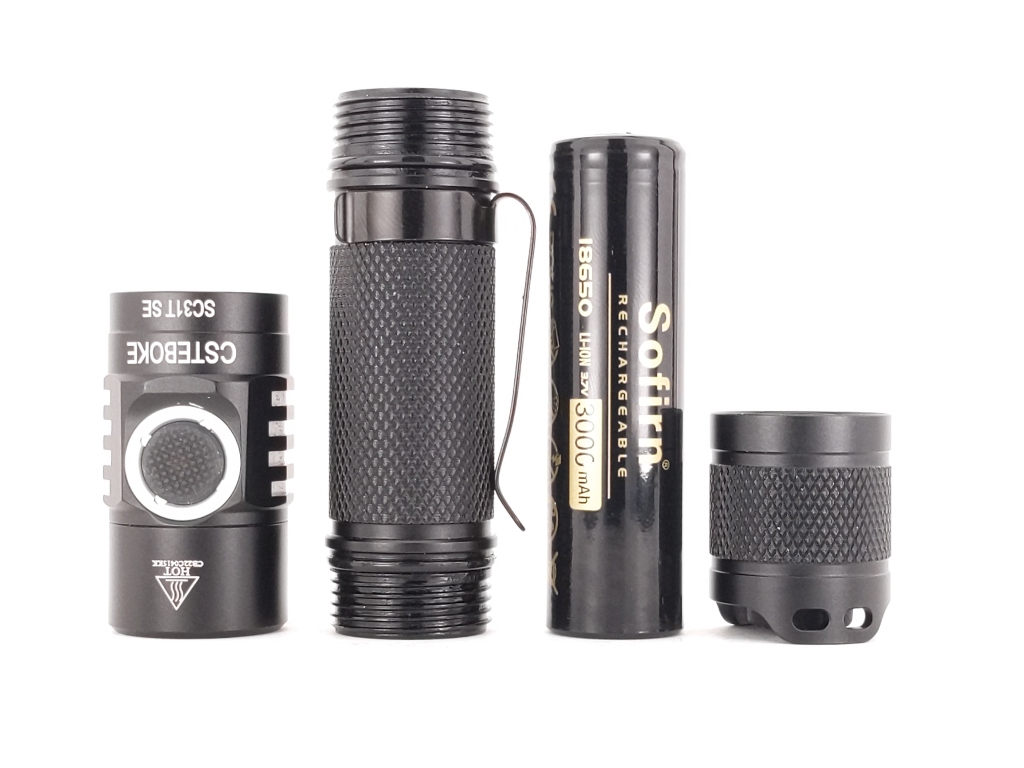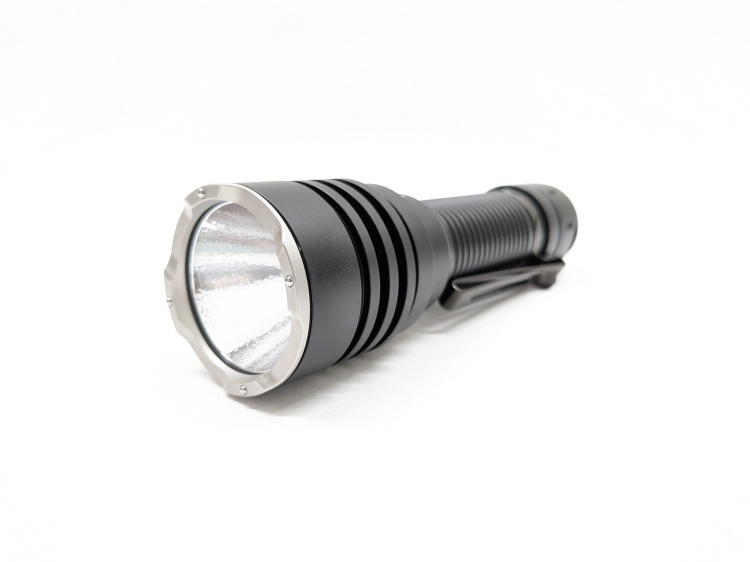Contents
- The Boring Stuff
- Let’s talk about the name
- What comes in the box?
- Design & Construction
- Size & Measurements
- User Interface
- Modes, Brightness, Throw, & Tint
- Runtime
- Driver & Regulation
- Emitter & Beam
- Switch
- Carry & Ergonomics
- Batteries & Charging
- Competition
- Conclusion
The Boring Stuff
CSTEBOKE sent me this light in exchange for an honest review. Here is the official product page. At the time of writing, SC31T SE is going for $30, but there’s also a 20% off coupon currently on the product page, and code “10ISD39K” should get you an extra 10% off for a limited time. Below are the official specs.

Let’s talk about the name.
The well known budget flashlight brand, Sofirn, has decided to launch a new brand, CSTEBOKE. It’s unclear why they decided to do this. When I asked them about the name, they said: “About creating the new brand, I think our company want to expand our product line. For this brand, we will do some new products such as bike light.” and “We have other company to promote new store and new trademark. We choose to have several small companies other than a big company. CS is acronym of my city. TEBOKE is name of company.“
There’s been a strong negative reaction to the new company name from the flashlight community. There is an entire BLF thread consisting of BLF users explaining why it is a bad name and encouraging Sofirn to discontinue its use. Sofirn is already a well known brand name and it flows well when spoken. CSTEBOKE does not flow at all and it’s unclear how it is supposed to be pronounced. It reminds many users of the numerous brands found on Amazon with gibberish names that make cheap, low quality products and are often just rebranded. That’s an unfortunate association.
Ultimately, I wish they had chosen to release this light under the Sofirn name. It’s very clear that it’s a Sofirn product and I think that would have fit in with their brand continuity better. I do hope that they choose to revisit the name “CSTEBOKE” in the future. When I read it, it communicates “low quality mass produced foreign brand”, not “high quality at a low price” which is what Sofirn products typically are.
What comes in the box?
The box is your typical Sofirn box, except it doesn’t say Sofirn on it. It’s thin brown cardboard with a small foam pad inside and a bubblewrap sleeve to protect the light. The following items are included in the box:
- The light itself, with a battery inside
- USB A-to-C charging cable
- User manual
- Lanyard
- Spare o-rings
Design & Construction
The design is just like SC31 Pro & SC31T: plain and un-objectionable.
Build quality is typical Sofirn: good. There are no problems, but nothing to write home about either. The threads are anodized, square cut, and lubricated. They’re fairly thin though.
Size & Measurements
From left to right:
Noctigon KR1
Convoy S2+
CSTEBOKE SC31T SE
Convoy M1

| Measurement | Measured (mm) |
|---|---|
| Bezel Diameter | 24.0 |
| Maximum Head Diameter | 27.0 |
| Length | 125.6 |
| Switch Diameter | 14.5 |
| Tail Switch Proudness | 0 |
| Side Switch proudness | 1.0 |
| Body Tube Diameter (internal) | 19.2 |
| Body Tube Diameter (maximum) | 23.5 |
| Body Tube Diameter (mode) | 22.4 |
| Body Tube Length | 72.0 |
| Ride Height (sticking out of pocket) | 33 |
| Pocket Clip Space (for pants material) | 4.5 |
| Pocket Clip Space (at mouth) | 4 |
| Pocket Clip Width | 7.3 |
| Pocket Clip Thickness | 0.8 |
| Pocket Cip Slot Width | 7.0 |
| Pocket Clip Slot Diameter | 21.1 |
| Tailcap Diameter | 24.3 |
| Tailcap Length | 29.7 |
| Driver Diameter | 19.5 |
| USB Port Width | 12.4 |
| USB Port Depth | 9.4 |
| USB Port Height | 3.8 |
| Included Battery Length | 67.2 |
| Included Battery Diameter | 18.6 |
Weight without battery: 66g / 2.3oz
Weight with includedbattery: 114g / 4.0oz
User Interface
This is a full-featured dual-switch UI.
The actions are # of presses followed by a hold (H) or a release (C). So, “1C” is one click and release. “2H” is two clicks but you hold down the last one.
“TS” is tail switch. “SS” is side switch.
| State | Action | Result |
|---|---|---|
| Off | Half-press TS | Momentary On (mode memory) |
| Off | Full-press TS | Constant On (mode memory) |
| Off | Click SS | No Action |
| Off | Hold SS and press TS | Moonlight (not memorized) |
| On | Full-press TS | Off |
| On (stepped ramp) | Click SS | Cycle up mode |
| On (smooth ramp) | Hold SS | Ramp brightness (release & hold again to reverse) |
| On | Double click SS | Turbo (not memorized) |
| On (turbo) | Click SS | Return to previous mode |
| On | Triple click SS | Strobe (alternating frequency, not memorized) |
| Strobe | Double click SS | SOS |
| SOS | Double click SS | Beacon |
| On | Quadruple click SS | Toggle stepped/smooth ramp |
Notably, there is no direct turbo access from off unless Turbo is memorized when you turn the light off, and it can only be memorized in the smooth ramp. If you’re using Turbo in the stepped ramp and you turn the light off, it will come back on in whatever mode you were last using, not Turbo. It’s also worth noting that Moonlight cannot be memorized at all because the smooth ramp does not dim down as far as Moonlight.
I wish Turbo & Moonlight could be memorized (if not accessed via shortcut) when using either ramp, but I’m glad there’s no Turbo shortcut from off. If there were, it would have to involve tapping the tail switch multiple times and that would prevent the use of the tailswitch for signaling.
Modes, Brightness, Throw, & Tint
First up, here is the official mode chart from the product page, for reference.

Disclaimer: Lumen measurements were taken on a Texas Ace 3.5″ Lumen Tube. A candela measurement was taken at (4.3/10) meters with an Opple Light Master III on the highest brightness, and other candela figures were calculated relative to that. CCT & DUV data was taken for each mode from a few feet away at the center of the hotspot with the Opple Light Master and Waveform DUV Calculator. Runtime tests were performed with the Ceilingbounce app on my smartphone. All of these tests were performed with a fully charged MODEL battery unless otherwise specified. I cannot measure moonlight directly, so moonlight readings are calculated based on the brightness relative to the next-lowest mode. None of this is professional equipment, so take all of these measurements with a grain of salt.
| Level | Lumens (@ Turn-On) | Candela (@ Turn-On) | Throw (meters) | CCT | DUV |
|---|---|---|---|---|---|
| Turbo | 1170 | 6000 | 155 | 4840 | 0.0057 |
| High | 480 | 2462 | 99 | 4840 | 0.0081 |
| Medium | 196 | 1005 | 63 | 4840 | 0.0089 |
| Low | 47 | 241 | 31 | 4750 | 0.0088 |
| Eco | 6 | 31 | 11 | 4630 | 0.0066 |
| Moonlight | 0.3 | 1.5 | 2.5 | 4670 | 0.0034 |
Mode Spacing / Ramp Speed: Mode spacing in the stepped ramp is reasonable. The smooth ramp is too fast at low levels and too slow at high levels.
How does it compare to the official specs? Moonlight is lower than spec’d, which is nice. Everything else is within the 10-15% accuracy margin of my equipment so I’ll call the specs accurate.
I think 6 modes is a little much here, especially considering that smooth ramping is an option as well. 5 modes or even 4 would have been preferable.
Runtime
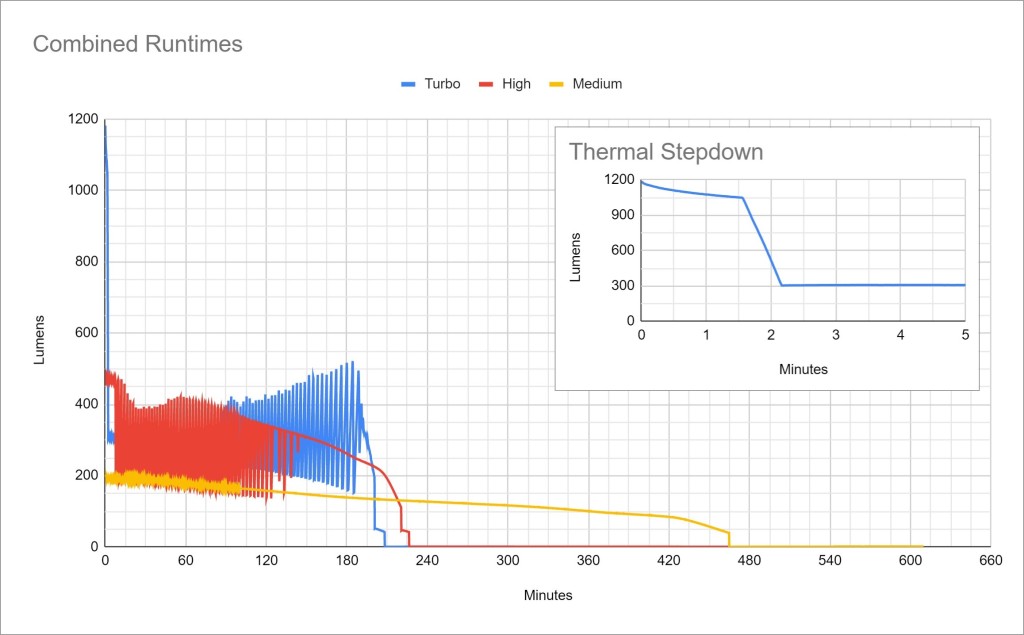
Performance: Turbo steps down within a couple minutes. There’s a lot of brightness fluctuation in Turbo and High modes as the light tries to find a balance between brightness and temperature. It’s not noticeable during normal use, but Sofirn should probably re-visit their ATR algorithm to make it less jumpy. Sustained output is somewhere around 300lm, give or take 100 for fluctuations. Real-world sustained output will likely be higher because your hand acts as a heat-sink.
I also ran a test on Low mode, but it was too long to fit on the graph reasonably. Brightness slowly decreased over the course of the test and the light ran for a little over 31 hours before a final hard step down to moonlight.
LVP: I’m not sure. I stopped every test before the light fully shut off because it drops to moonlight at the end and then runs for hours and hours and just slowly gets dimmer. The lowest voltage I measured after ending a test was 2.85V, and that was after hours of moonlight. I can’t conclusively say it has low voltage shutoff, but the hard stepdown to moonlight seems to be sufficient low voltage protection to me. It would probably have to run for a day or two after the hard stepdown to moonlight before the battery drained below a safe level.
Driver & Regulation
This appears to be a typical Sofirn-produced FET driver, so regulation is poor. As you can see in the regulation chart below, brightness decreases with cell voltage on all modes. That’s apparent in the Medium runtime test as well.

Note: All regulation measurements are taken at turn-on so they do not reflect any thermal or low voltage stepdowns that may occur. A value of 0 indicates low voltage shutoff immediately upon activation.
Thermal regulation: Is present, but as you can see from the runtime graphs, it oscillates a lot. The oscillations are slow enough that they aren’t noticeable in normal use, but it would be nice if Sofirn would re-visit their ATR algorithm to make it more stable.
PWM: No PWM is visible to my eye. I did some testing on each mode with an Opple Light Master III and found PWM (or some kind of flickering) on all modes. Fortunately, it’s very fast and should not cause any issues
Emitter & Beam
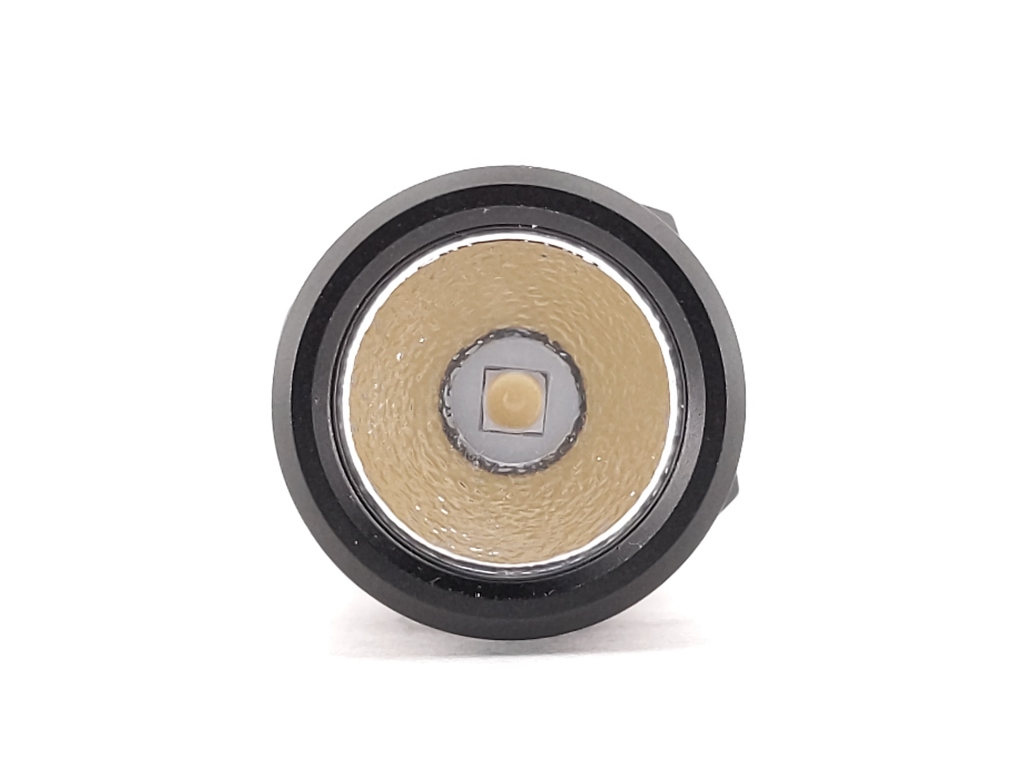
CSTEBOKE SC31T SE differs from Sofirn SC31T in their emitters. SC31T uses an Luminus SST40 LED and SC31T SE uses a Samsung LH351D in 5000K. I measured mine to have an RA (CRI) of 95 on my Opple Light Master. It measured a little under 5000K with some green tint.
Unfortunately, I could not manage to get the bezel off, even with the help of some super grippy gloves I keep around for that exact purpose. It’s possible it’s just really cranked down as I’ve seen that in one Sofirn-produced light before. I hope they haven’t decided to glue the bezel.

The beam is on the floody side. There’s a tiny bit of tint-shift, but not bad. The big dome on the LED and the orange peel reflector do a good job of eliminating artifacts.

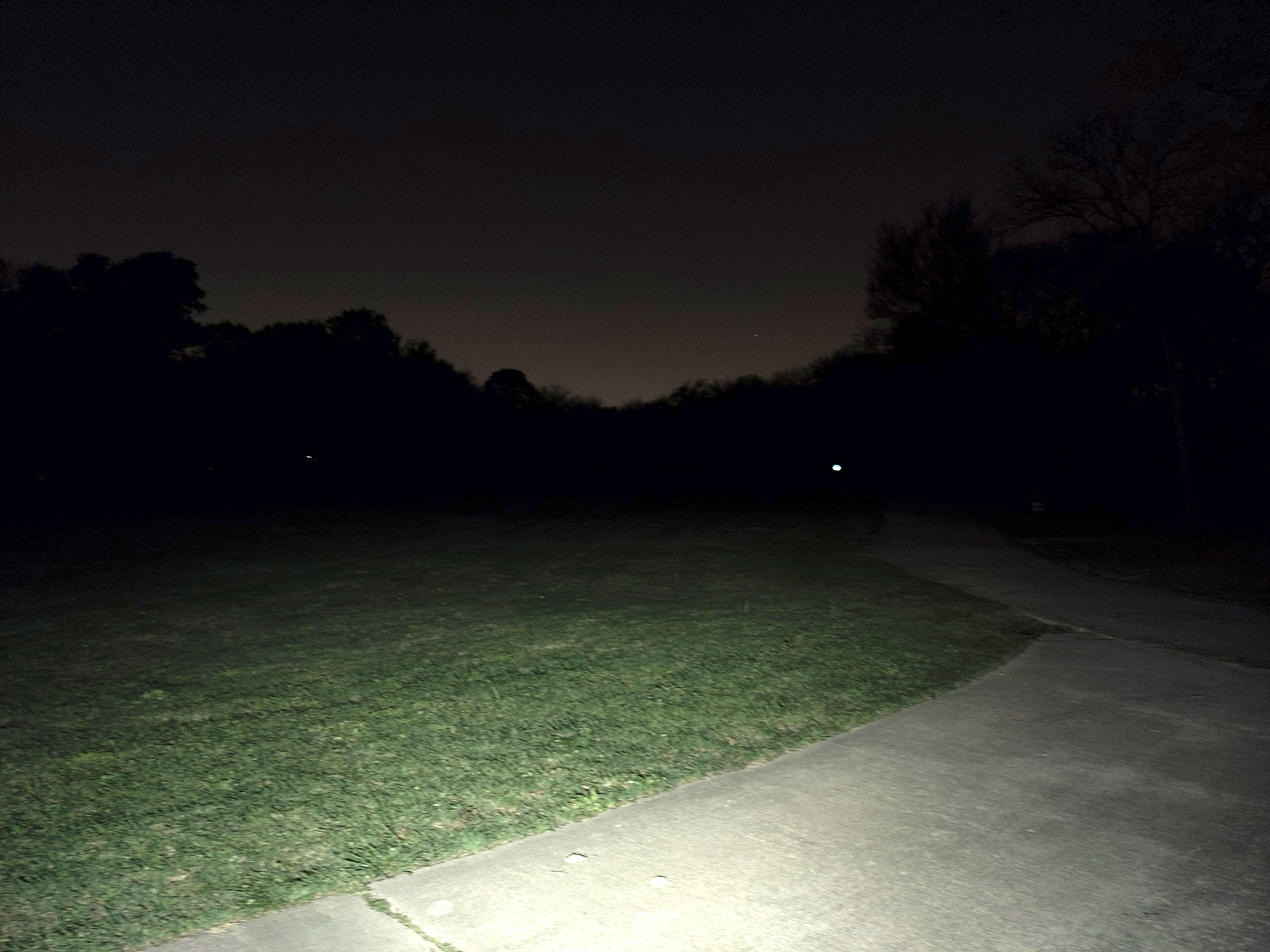

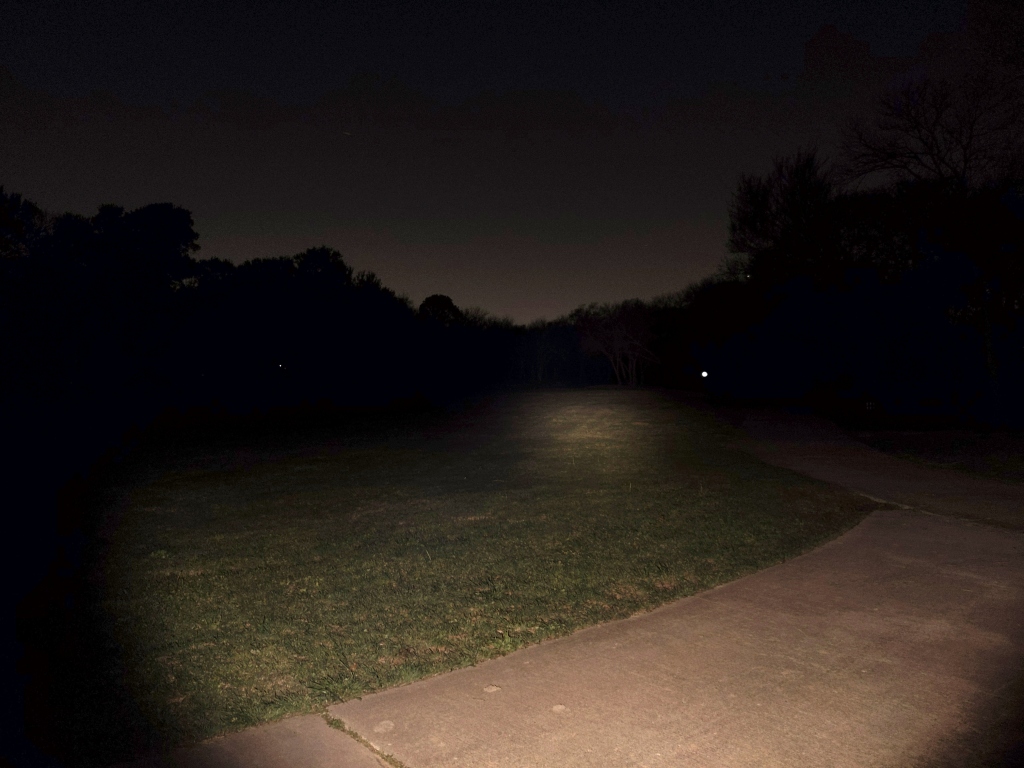
In the beamshots above, the trees where I’m aiming the hotspot are 175M away. In the beamshots below, the park bench where I’m aiming the hotspot is 42M away. I chose Sofirn HS20 to compare with sliders because it’s using the exact same Samsung LH351D 5000K LED.
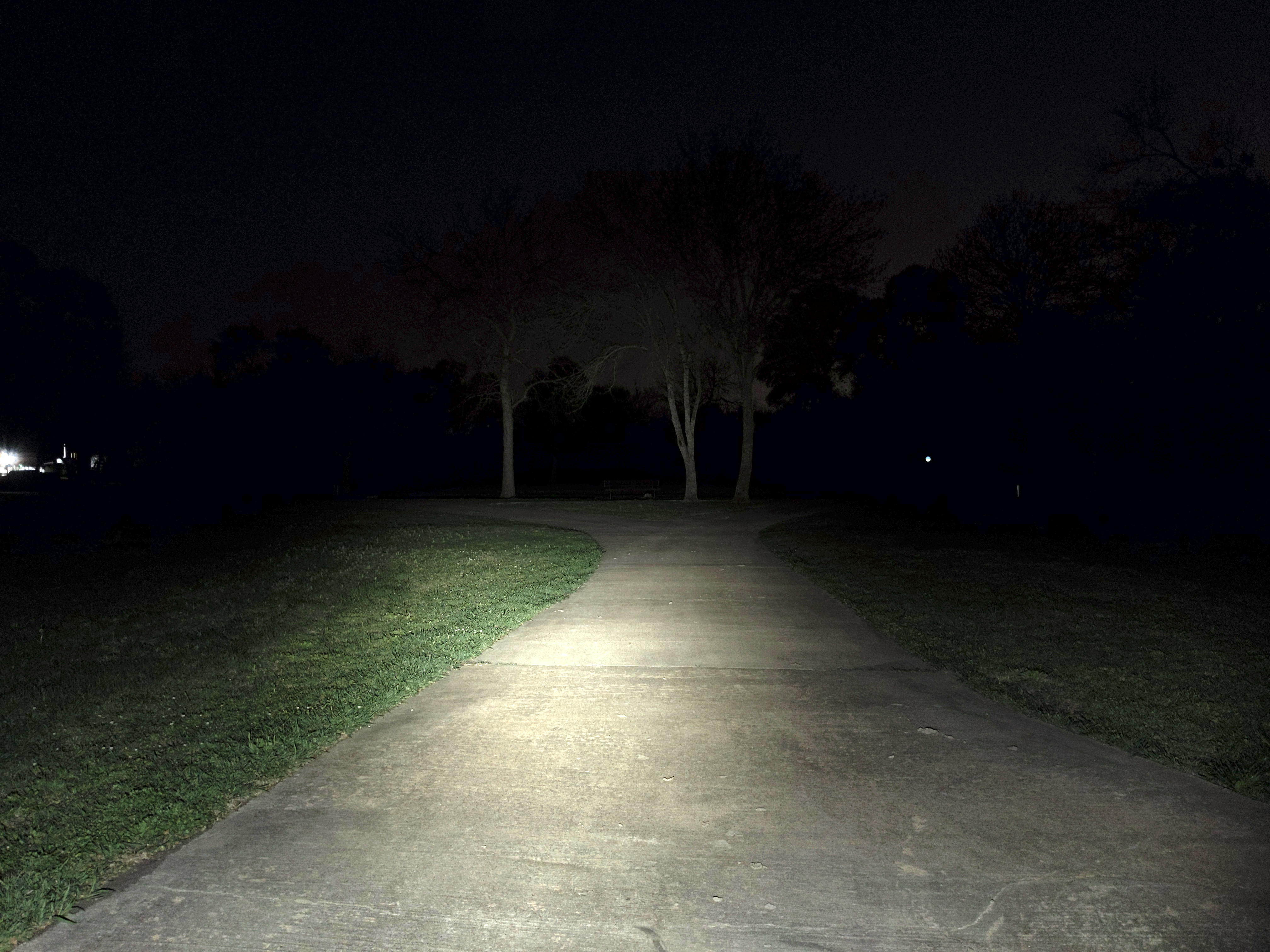
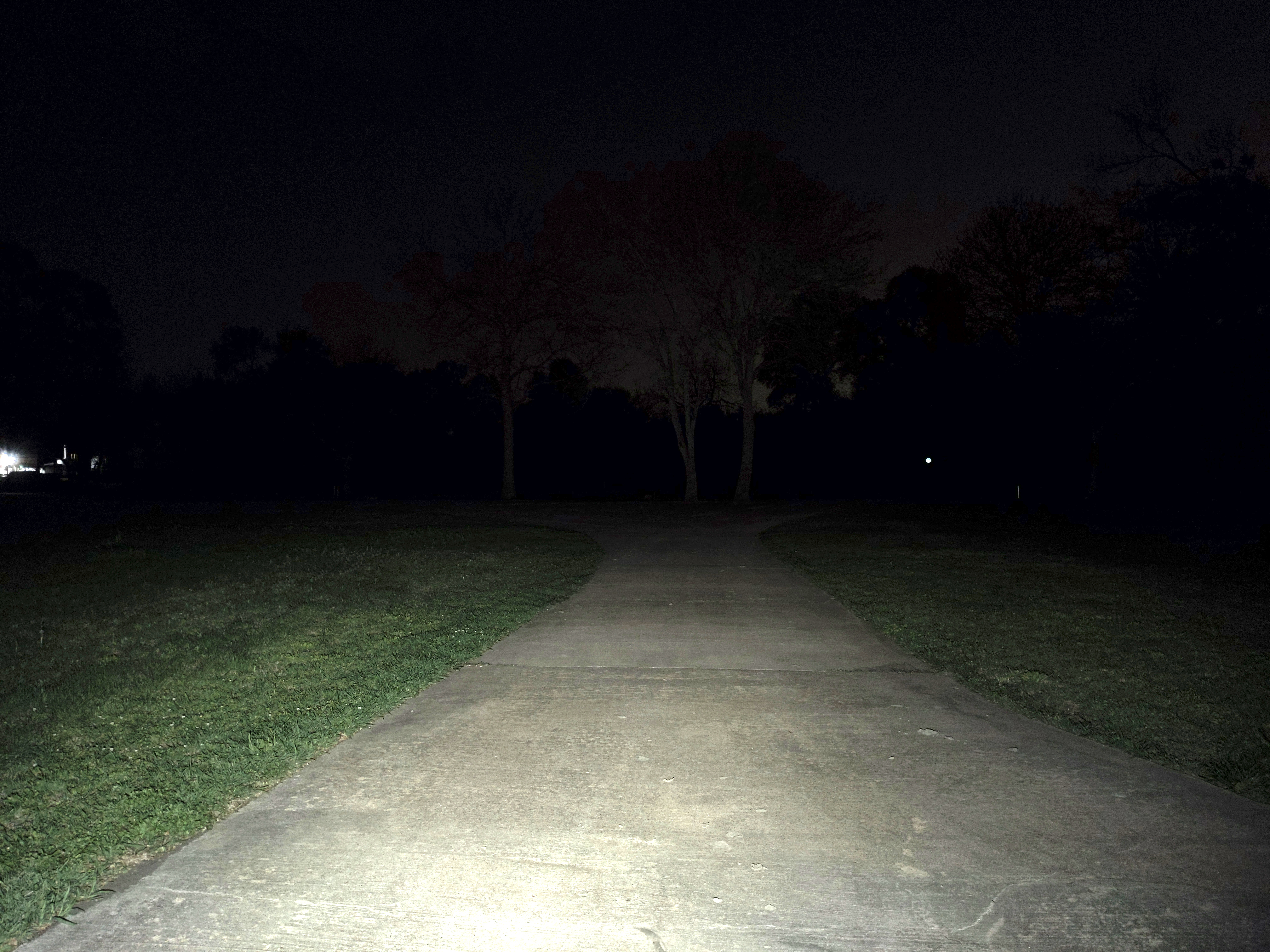

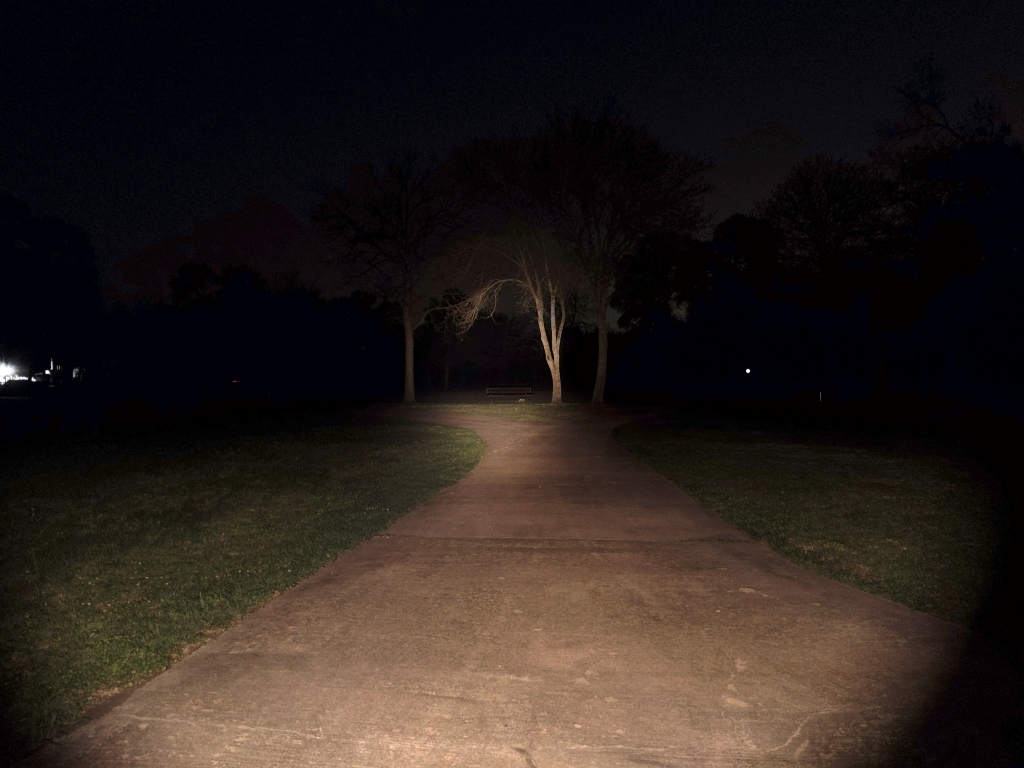
It’s not the brightest or throwiest thing outdoors, but it does the trick.
Switch
There are two switches: a forward clicky tail switch and an electronic side switch. The forward clicky tail switch turns the light on/off and allows for momentary activation. It’s quite stiff and has a fair bit of travel, but it’s very tactile and audible when it clicks. The switch is held in place by an aluminum retaining ring and it can be removed with some snap ring pliers. The switch boot is an odd size though, so you can’t swap that easily.
The side switch is used for mode changes and it has red and green LED’s underneath. They come on for 5 seconds every time you turn the light on (except in Moonlight) to indicate battery status. Green means “remaining battery power is good”. Constant red means low. Blinking red means empty. If you’re using the light and the battery gets low, the red LED’s will come on to warn you.
The side switch is held in place by a retaining ring that’s easy enough to remove with snap ring pliers. Just be careful; mine slipped and scratched the light slightly. The switch PCB isn’t glued down at all.
Carry & Ergonomics
Ergonomics in-hand are fine. Nothing objectionable but not awesome wither. All the normal grips work fine.
It carries fine too. The narrow build is nice for keeping it low profile, but the tailcap does stick out a fair bit. Some users may find that helpful as it makes it easier to pull out of the pocket. Unfortunately, the clip slot is extremely wide at 7mm, so I don’t know of any deep carry clips that will fit correctly. Sofirn also includes a lanyard in the box, and the tailcap has two holes so you can loop the lanyard through without interfering with tailstanding. Tailstanding works well.

Batteries & Charging
CSTEBOKE includes a Sofirn-branded, 3000mah, button top, unprotected cell. It’s perfectly adequate for this light. There are springs on the tail and the driver, so flat top cells will work fine too. I didn’t have any protected cells to test with, but I added a 2.6mm spacer on the end of the stock cell, totaling 69.8mm in length. That fit, so I believe most protected cells will work just fine.
I’m excited about this light’s charging solution. CSTEBOKE included two diodes in the tailswitch so that the light can charge without the switch being clicked on. I’ve never seen that done with a mechanical tailswitch like this and it’s innovative. I hesitate to recomend dual-switch lights with integrated charging like this to non-flashlight-people because I’m worried they’ll forget to turn the light on when they plug it in to charge. This eliminates that concern.
There’s a USB-C charging port on the head of the light hidden behind Sofirn’s typical and excellent rubber cover they use on their smaller diameter lights. It’s very secure and I had no trouble fitting any of my USB-C cables into the charge port. C-to-C cables work just fine too. Charging took about 4 hours and stopped at 4.22V. That’s a little high, but not dangerously so. It cannot be turned on while it’s plugged in. The side switch LED’s come on during charging. Blinking red means charging. Constant green means fully charged.
Competition
Here are some lights in the same class and how they compare.
Sofirn SC31T: Exact same light but with brighter and lower CRI SST40 LED instead of LH351D
Sofirn SC31 Pro: Same host except side switch only, Anduril UI, magnetic tailcap (this specific listing only), brighter and lower CRI SST40 LED instead of LH351D, available in multiple colors
Wurkkos FC12: Similar shape, bidirectional clip, brighter and throwier and lower CRI SFT40 LED
This section is not comprehensive. If I didn’t include a particular light here, it doesn’t mean it’s bad or doesn’t deserve to be here. I simply cannot list every possible competitor.
Conclusion
Ultimately, this is a solid dual-switch light for EDC at a great price point (especially after those coupons). It’s one of very few dual-switch EDC lights that comes with a high CRI LED and that’s a pretty compelling feature! It’s also intuitive for anyone to pick up and use thanks to the dual-switch UI and the awesome diodes in the tailcap that allow charging.
Thanks to Sofirn CSTEBOKE for sending me this light for review!
